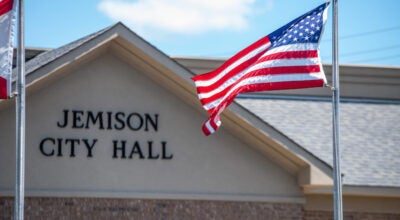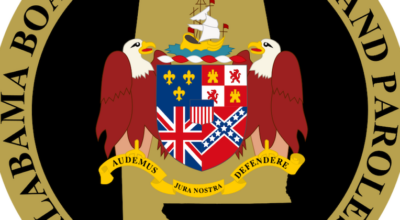Crews fan out across Texas to assess Ike’s wrath
Published 9:54 am Saturday, September 13, 2008
HOUSTON (AP) – Rescue crews in high-wheel trucks, helicopters and boats ventured out to pluck people from their homes Saturday in an all-out search for thousands of Texans who stubbornly stayed behind overnight to face Hurricane Ike.
The storm blew out skyscraper windows, cut power to millions and swamped thousands of homes along the coast. Yachts were carried up onto roadways, buildings and homes collapsed and cars floated in floodwaters.
State and local officials began searching for survivors by late morning, just hours after Ike roared ashore at Galveston with 110 mph winds, heavy rains and towering waves. Overnight, dispatchers received thousands of calls from frightened residents who bucked mandatory orders to leave as the storm closed in. Authorities estimated there were about 140,000 or more who stayed despite warnings they could die.
“There was a mandatory evacuation, and people didn’t leave, and that is very frustrating because now, we are having to deal with everybody who did not heed the order. This is why we do it, and they had enough time to get out. It’s just unfortunate that they decided to stay,” said Steve LeBlanc, city manager in Galveston.
Sedonia Owen, 75, and her son, Lindy McKissick, defied evacuation orders in Galveston because they wanted to protect their neighborhood from possible looters. She was watching floodwaters recede from her front porch Saturday morning, armed with a shotgun.
“My neighbors told me, ‘You’ve got my permission. Anybody who goes into my house, you can shoot them,'” said Owen.
The storm, which had killed more than 80 in the Caribbean before making landfall in the United States, claimed at least two lives in Texas, but the toll was likely to rise. A woman died early Saturday when a tree fell on her home near Pinehurst in Montgomery County, crushing her as she slept. A 19-year-old man also slipped off a jetty near Corpus Christi and apparently washed away.
President Bush declared a major disaster in his home state of Texas and ordered immediate federal aid. Officials were encouraged that the storm surge topped out at only 13.5 feet — far lower than the catastrophic 20-to-25-foot wall of water forecasters had feared, but major roads were washed out near Galveston, and the damage was still immense.
Residents of Houston emerged to take in the damage, even as glass from the JPMorgan Chase Tower — the state’s tallest building at 75 stories — continued to rain on streets below. Trees were uprooted in the streets, road signs mangled by wind.
“I think we’re like at ground zero,” said Mauricio Diaz, 36, as he walked along Texas Avenue across the street from the Chase building. Metal blinds from the tower dotted the street, along with red seat cushions, pieces of a wood desk and office documents marked “highly confidential.”
Houston Police officer Joseph Ledet was out patrolling the streets early Saturday, but stopped and simply stared as he approached Chase Tower. “It looks like a bomb went off over there,” he said. “Just destruction.”
Shortly before noon, Houston police cars prowled downtown, ordering citizens off the streets over bullhorns: “Please clear the area! Go home!”
The Federal Emergency Management Agency said search and rescue teams were at the ready in Houston, poised to go to the aid of those stranded by Hurricane Ike. At a sports arena, tractor-trailers and large sport utility vehicles sat idle as the vast storm churned northward across the state.
The storm, nearly as big as Texas itself, blasted a 500-mile stretch of coastline in Louisiana and Texas. It breached levees, flooded roads and led more than 1 million people to evacuate and seek shelter inland.
In Galveston, buildings burned unattended overnight because fire crews couldn’t get through flooded streets. Seventeen structures collapsed, including two apartment buildings, but authorities hadn’t had any deaths reported. There was no water or power, and the main hospital had to fly critical care patients to other facilities.
South of Galveston, authorities said 67-year-old Ray Wilkinson was the only resident who didn’t evacuate from Surfside Beach, population 800. He was drunk and waving when authorities reached him on Saturday morning.
“He kinda drank his way through the night,” Mayor Larry Davison said.
Some homes were destroyed, but the storm was not as bad for Surfside Beach as Davison had feared. “But it’s pretty bad,” he said. “It’ll take six months to clean it up.”
Farther up the coast, much of Bridge City and downtown Orange were under up to 8 feet of water and rescue teams in dump trucks were plowing through in an effort to reach families trapped on roofs and inside attics.
“Right now we’re pretty devastated,” Orange County Judge Carl Thibodeaux said. “We’re still watching the water steadily rise slowly. Hopefully it’s going to crest soon.”
Thibodeaux said Ike was not causing as much structural damage as Rita, but that rising water was making the effects more devastating. Thibodeaux and other officials were stuck inside an emergency operation center, where he said the water outside was at least 5 feet and rising.
In Louisiana, Ike’s storm surge inundated 1,800 homes. In Plaquemines Parish, near New Orleans, a sheriff’s spokesman said levees were overtopped and floodwaters were higher than either hurricane Katrina or Rita.
“The storm surge we’re experiencing, on both sides of the Mississippi River, is higher than anything we’ve seen before,” Maj. John Marie said.
As Ike moved north later Saturday morning, the storm dropped to a Category 1 hurricane, then a tropical storm. At 5 p.m. EDT, the storm’s center was 50 miles south-southeast of Mount Pleasant, Texas. Top sustained winds were about 45 mph, and tornadoes were possible.
Because Ike was so huge, hurricane winds pounded the coast for hours before landfall and continued through the morning, with the worst winds and rain after the center came ashore, forecasters said.
“For us, it was a 10,” Galveston Fire Chief Mike Varela said. Varela said firefighters responded to dozens of rescue calls before suspending operations Friday night, including from people who changed their minds and fled at the last minute.
Ike landed near the nation’s biggest complex of refineries and petrochemical plants, and already, prices were reacting. Gas prices nationwide rose nearly 6 cents a gallon to $3.733, according to auto club AAA, the Oil Price Information Service and Wright Express.
Refineries have had to shut down twice in the past two weeks as storms meanced the Gulf, and some worried a perceived supply shortage could send prices shooting back toward all-time highs of $4 per gallon, reached over the summer when oil prices neared $150 a barrel. In some parts of the country, prices surged briefly to $5 a gallon Saturday.
“They are just passing along the wholesale cost,” said Tom Kloza, chief oil analyst with the Oil Price Information Service.
More than 3 million customers lost power in southeast Texas, and some 140,000 more in Louisiana. That’s in addition to the 60,000 still without power from Labor Day’s Hurricane Gustav. Suppliers warned it could be weeks before all service was restored.
But there was good news: A stranded freighter with 22 men aboard made it through the brunt of the storm safely, and a tugboat was on the way to save them. And an evacuee from Calhoun County gave birth to a baby girl in the restroom of a shelter with the aid of an expert in geriatric psychiatry who delivered his first baby in two decades.
___
Christopher Sherman reported from Galveston. Associated Press writers Juan A. Lozano in Galveston, Jay Root in Austin, Michael Kunzelman in Orange, Brian Skoloff in West Palm Beach, Fla., April Castro, Mark Williams and Andre Coe in College Station, and Allen G. Breed in Surfside Beach contributed to this report.






